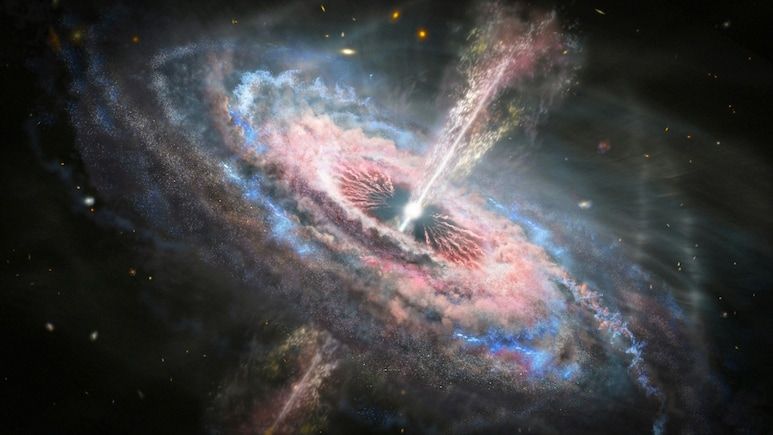Cosmic Powerhouse: Supermassive Black Hole Blazes Beam of Energy Towards Earth

Astronomers have made a groundbreaking discovery, witnessing a superpowerful beam of energy emanating from a black hole located an astonishing 12.9 billion light-years away from Earth. The "blazar" phenomenon, detected using data from NASA's Chandra Observatory and Chile's Very Large Telescope, has been firing a intense beam of energy towards our planet, setting a new record for the distance from which such a phenomenon has been observed.
According to scientists, this black hole, named J0410-0139, is roughly 700 million times more massive than our sun and one of the oldest of its kind ever observed. The findings have provided a unique peek into the early universe and offer "a laboratory to study the interplay between jets, black holes, and their environments during one of the Universe's most transformative epochs," according to Dr Emmanuel Momjian, an astronomer at the National Radio Astronomy Observatory in Virginia.
The supermassive black hole is creating powerful jets of high-energy particles that extend millions of light-years into space. When these jets point directly at Earth, scientists refer to it as a blazar, named after NASA. The phenomenon was only previously known for sources located closer to our planet, with less than 3,000 discoveries made so far.
The latest finding is particularly significant, as it marks the first time such an advanced signal has been detected over 100 million years after the Big Bang, shattering existing records. The observation raises intriguing questions about how supermassive black holes accelerated their growth in the early universe, sparking intense debate among scientists.
"The alignment of J0410-0139's jet with our line of sight allows us to directly peer into the cosmic powerhouse," said Dr Momjian. "This unique opportunity will give us invaluable insights into the processes that shape the behavior and emission of blazar jets during one of the Universe's most pivotal moments."
As scientists continue to unravel the mysteries surrounding this celestial body, further research is expected to shed light on the extraordinary workings of supermassive black holes and their role in shaping the cosmos.
